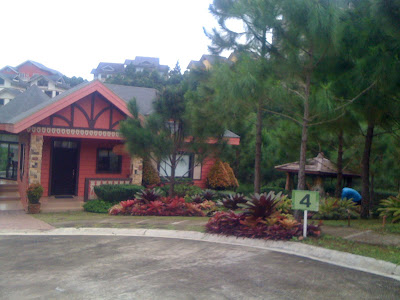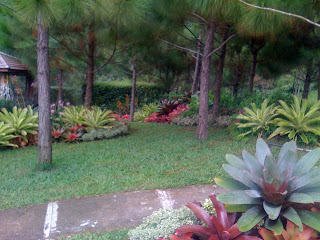Due to some unexpected turn of events, I found myself passing through five different airports over a span of two weeks (October 8 to 23). Given the very short interval between airports, I decided that it would be interesting to see how these five airports compare in terms of approach to indoor landscaping and plant utilization.
I have been meaning to start working on this post since I arrived from Bangkok more than two months ago but have not been able to. Since one of the main reasons that has prevented me from taking on the task is the length of the write up, I have decided to divide it into several installments.
There will be a total of five parts broken down as follows:
a. Philippines - Ninoy Aquino International Airport
b. Taiwan - Taoyuan International Airport
c. Singapore - Changi International Airport
d. Indonesia - Juanda International Airport
e. Thailand - Suvarnabhumi International Airport
First Stop, the Ninoy Aquino International Airport (Manila, Philippines)
The Ninoy Aquino International Airport (NAIA) is made up of three terminals. Terminal 1 is for all international carriers other than Philippine Air Lines (PAL) and Cebu Pacific. Terminal 2 is for PAL while Terminal 3 is for Cebu Pacific.
The first leg of my journey started with NAIA's Terminal 2 as I was taking PAL for my flight to Taipei.
Terminal 2 is a modern facility and is a great improvement from Terminal 1 which has always served as the international airport since I can remember (1970's). It is made of steel and glass and offers wide open views of the landing field and the open areas that make up the airport.
Entrance to the airport is quite straightforward and the landscaping is very functional and institutional in character though a bit indistinct. Just before entering the check-in area, several spaces on the second floor have been converted into outdoor pocket gardens. Palms, irises, sansevieras, plumerias, ficus benjamina, essentially make up this generic composition. The turf is decently maintained but the other shrubs can stand a bit of tidying up.

On another side one can see this water feature which rather than adding to the overall appeal of the pond on which it stands calls too much attention to how poorly conceptualized and executed an otherwise interesting concept. It does not help that the nautilus inspired water feature is sloppily maintained with brown algae growing completely on its inner walls but the sorry excuse for a vertical garden made up of struggling asparagus ferns grown of soft polybags.
Just before entering the check-in counter area, passengers will pass by aisles with a few planters like the one on the right. Plant selection is correct given the conditions in the area: a palm for height with aglaonemas and bromeliads for the base is a proven fomula.
Unfortunately, the plants are worn out and needs to be replaced already. It really is a shame because given the lighting and temperature conditions, these plants should do quite well, except maybe the bromeliads.
The most likely culprit: poor growing medium, inadequate feeding and/or watering program or poor plant quality at planting time.
After checking-in, one must spend some time in the waiting area before boarding. Just like most airports, there are the usual duty free shops to entice bored or anxious passengers, restaurants/coffee shops where one can grab a bite just in case food will not be served on board. And of course, the plants or interior landscape arrangements to give the space a more natural feel.
There are a number of spaces in the waiting area that has been designated by the designers for plants. It is easily discerned that the designers set aside these spaces to showcase the beautiful plants that are readily available in a tropical country like the Philippines. Add to this the creativity of filipino garden designers and landscapers.
Below are the planting arrangements that have been done on some of these spaces.
The composition above is made up of zamioculcas, guzmanias, tillandsias, and sanseverias. It has weathered tree trunks for the vertical element, with several boulders and loose stones for additional non-plant interest. And one could not miss the imitation japanese lantern which seems to be completely out of place plus the colorful bromeliad flowers made out of plastic. At first glance, the flowers seem real.
Sometimes, one's knowledge can be disadvantageous......
The arrangement above has definitely seen better times. The plant selection is generally good and that can be seen by the way the plants have been growing. The aglaonemas, palms, crinum lilies, and philodendron are thriving. Only the few bromeliads that seemed to have been left in the area too long are in need of rehabilitation. The waterfall and its small pool located a bit off-centered in the space, is all dried up. Of course, the fake bromeliad flowers are present again.
In another area, almost the same situation may be seen as shown below. The plants are doing well, mainly due to the correct plant selection - palms, sansevieras, pandan, all shade tolerant and highly adapted to indoor conditions. It has a water feature and a catch pond, this time right in the middle, that is also all dried up. Again, the very popular fake bromeliad flowers.

Outside the floor to ceiling glass walls are planter boxes filled with overgrown horsetail, with the original plants all turning brown and the offsets now taking over and growing in all direction ruining the original concept of clean purely vertical lines.
As one walks to board his plane, leaving NAIA Terminal 2 this is what he will see. Small green patches of grass with cycads and palms bordering the main building.
And what about Terminal 1? There is very little space for plants outside this airport.
The concept of green architecture must have been in its infancy at the time that this airport was planned and built.
Though easier to improve, the same principle seems to be applied inside the building as well. This principle seems to be "Keep them out plants, less clutter (and expense) inside the better!"
This potted sifritzi palm seems to be growing happily by its lonesome self along this quite long aisle.
Below are some of the other plants that are sparsely distributed in the airport:
Three overpotted variegated schefflera sit snugly in a space which seemed to be meant for plants and which may be filled with more than 30 similarly sized plants.
In a planter in the foreground of the picture below, there is this smallish sifritzi palm with what seem to be recycled bromeliads from the interiorscape arrangement at Terminal 2. Fortunately, the palm seem to be doing much better as compared to the bromeliads. At the far end of the picture is a similar palm as well.
Tempted as I may be to draw conclusions at this stage, let me complete the presentation of the situation in the other airports before I do so.





 Palms are growing so well in this area with its almost greenhouse conditions. Live specimens grow luxuriantly, in contrast to most indoorscapes of this scale where artificial palms (and trees) would have been used instead.
Palms are growing so well in this area with its almost greenhouse conditions. Live specimens grow luxuriantly, in contrast to most indoorscapes of this scale where artificial palms (and trees) would have been used instead.












































